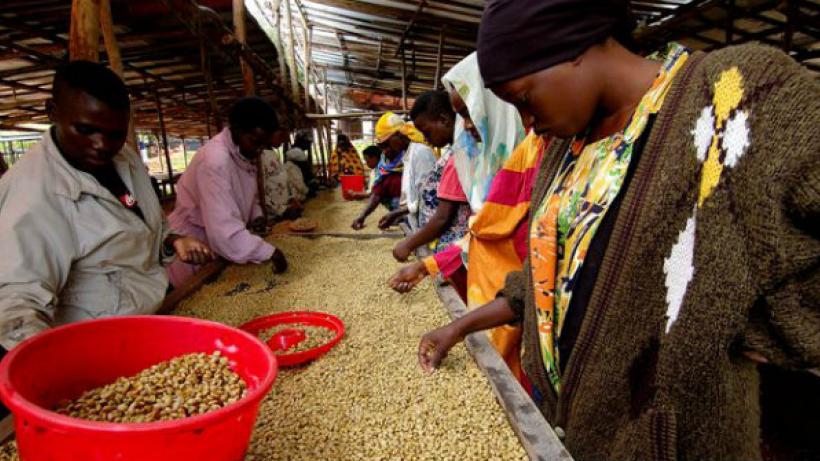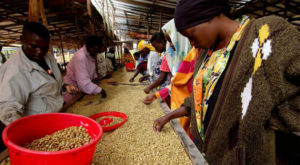
Rwanda’s export challenge
Rwanda must create an additional 200,000 jobs per year to absorb its expanding population. Increasing exports could play an important role in achieving this goal. A new policy brief by the IGC outlines the challenges Rwanda needs to overcome to improve its trade balances.
Since 2000, Rwanda has seen a rapid rise in exports of goods and services. Increasing exports and attracting foreign direct investment have been central priorities for the Government of Rwanda. However, a more nuanced analysis of the growth in trade relative to the country’s GDP reveals that increasing commodity prices through 2014 drove much of the growth. The current environment of flat commodity prices, slow global growth has meant that the prospect of rising interest rates and diminishing development assistance, Rwanda will have to work especially hard to achieve its ambitious goals for growth.
Philip English, with inputs from Patrick McSharry and the IGC Rwanda country economists, recently released a policy brief analysing the situation for export and foreign direct investment in Rwanda. The brief highlights key challenges and provides a prescriptive policy framework to raise exports and increase employment opportunities.
Trade tides are turning
The world economy has become much less favourable for Rwandan trade in the last decade. Export prices have declined for the country’s three main mineral exports, resulting in a decline in the value of total exports by 7% in 2015. As the country’s imports have continued to rise, such that imports of goods and services are now roughly twice the size of exports, the current account deficit remains large.
With the global commodity boom coming to an end in 2014, the economic downturn resulted in a $85 million loss in export earnings within the year. A further decline in mineral revenues in 2016, and the slowdown in tourism following the outbreak of Ebola has heavily constrained Rwanda’s growth recovery.
A new urgency in generating more exports
Rwanda is now faced with the difficult task of reinvigorating export growth. Exports and foreign direct investment have traditionally been important drivers in income growth through their effects on productivity.
With one of the highest population densities in the world and quick urbanisation, there is a strong urgency to generate further investments for infrastructure, housing, and public service delivery. 80% of Rwanda’s population is still engaged in farming, but the average farm size is decreasing. This means the country must create some 200,000 jobs per year to absorb the expanding population, and even more to relieve the pressure on rural lands.

The path ahead needs to address vulnerabilities
The government’s growth strategy Vision 2020 recognises the need to create jobs urgently and increase firm productivity. Trade and investment are highlighted as key factors in generating the desired growth. For the trade sector to grow further however, the IGC’s policy brief underscores the importance of the government’s effort to address key vulnerabilities in their export portfolio. The policy brief outlines the following core recommendations for Rwanda:
- Deepen the supply chains and increase domestic value add:
The Government’s new “Made in Rwanda” program, now under preparation, seeks to overcome impediments facing local industries. Helping domestic producers link up with global lead firms can increase opportunities for domestic export and integration into global value chains, and in the long run, reduce Rwanda’s dependence on imports. The government can help foster an enabling environment for the development of supplier linkages between global lead firms and domestic enterprises through its export promotion activities and investment promotion efforts or local content units.
- Lower trade barriers to improve domestic firm incentives to export:
The fact that Rwanda does not have direct access to a port means that the transport costs involved with moving goods over borders are very high. High transport costs limit trade significantly, typically even more than tariffs. In the last couple of years, Rwanda has made good progress in removing non-tariff barriers (NTBs), but more remains to be done. The country still scores badly in the “trading across borders” category of the World Bank’s Doing Business indicator, with a rank of 87th place in 2016. Improvements need to be made in reducing the time required to comply with border regulations and documentary complexity.
- Improve competitiveness in the services sector:
Efficient services are key inputs to higher-productivity manufacturing and export. Services are also a dynamic source of exports on their own. Tourism, for example, is a particularly good opportunity for Rwanda. The services sector also incurs fewer transportation costs (in the ICT sector for example), and this provides a significant advantage. Philip English and his co-authors recommend that a large scale programme of regulatory analysis should be undertaken for backbone services sectors like transport, finance, business services, logistics, and professional services – with the purpose of discerning policy and institutional barriers to new competition as well as identifying targets for investment promotion.
- Further diversify exports and focus on sectors with growth potential:
Rwanda has a high concentration of export products in sectors with declining international demand, although the exports are getting more diversified. The share of traditional exports such as coffee, tea, and minerals in formal exports fell from 87% in 2004 to 46% in 2015. Meanwhile, other exports and re-exports have grown. This is in part good news, as diversified trade volumes are more likely to withstand large swings in commodity prices that would otherwise leave the country vulnerable. But it also shows that Rwanda has an important opportunity to harness exports in sectors with growing international demand. The sectors that the IGC policy brief highlights as an important focus for the government include tourism, coffee and tea, mining, livestock production, and horticulture.
Despite challenges facing Rwanda’s trade growth, there remain a vast range of options and opportunities for the country to continue enjoying revenues from growth in exports. Read the full policy brief by the IGC Rwanda team here to learn more about the critical sectors for growth.

